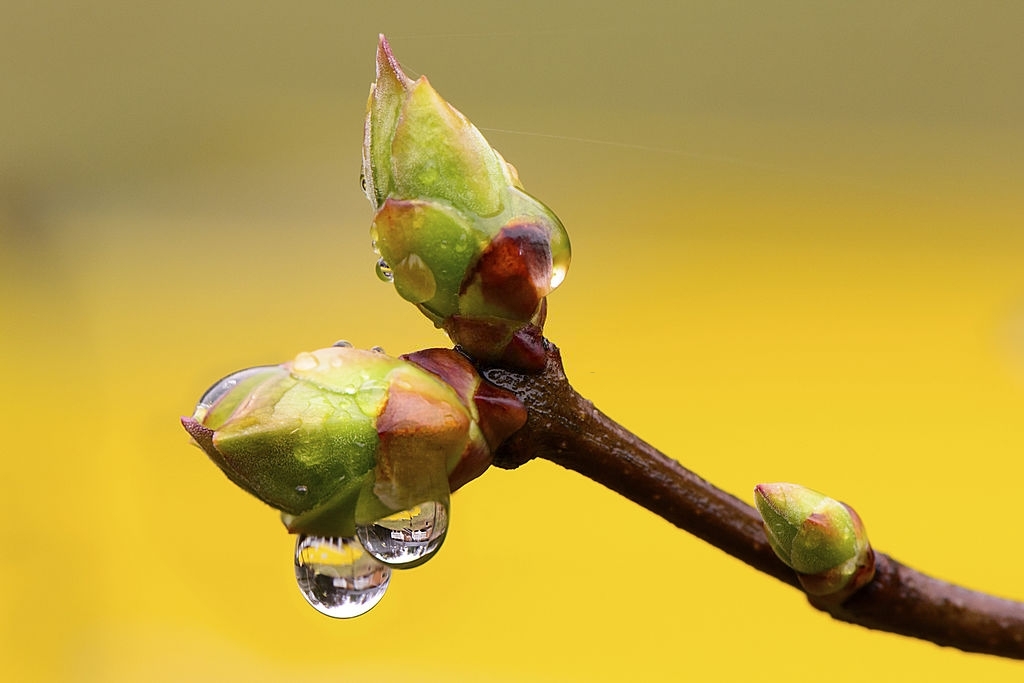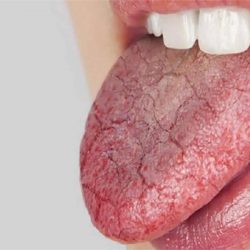Gemmotherapy is a specialised form of phytotherapy which uses the buds, young shoots and rootlets of trees and plants. Known as “global embryonic phytotherapy”, it has been studied in depth by experts such as Dr Henry and Drs Bergeret and Tétau.
Gemme: borrowed from the Latin gemma “bud” and by analogy of shape and colour “precious stone”
What is gemmotherapy?
Gemmotherapy is defined as global embryonic phytotherapy. It uses the active principles of freshly picked buds, seeds, rootlets or young shoots prepared by direct maceration in a solution of alcohol and glycerine. The homeopathic culture of Drs Bergerey and Tétau led them to use the Hahnemanian dilution to the first decimal place (1 DH) in order to impart an informational and energetic character to the preparations that went beyond mere molecular activity. There is also another galenic form known as “mother macerate”, which uses an initial macerate composed of water, glycerine and alcohol, which undergoes no dilution. You can, however, dilute it yourself in a glass of water.
What are the benefits of gemmotherapy?
A distinctive aspect of gemmotherapy is its use of the plant ‘totum’, a term which describes the entire genetic heritage and properties of the plant. Buds concentrate the embryonic tissues of the plant, encompassing the properties of the flowers, fruit and leaves. For example, the Linden bud contains not only the calming properties attributed to the flower, but also the diuretic and purifying properties of the sapwood. This global approach provides a multi-purpose therapeutic action.
Physiological action: Drainage, regulation and regeneration
Bud macerates work in depth to re-establish physiological processes that have gone awry. Initially, they act by draining and detoxifying certain organs. These macerates are rich in plant growth substances, which stimulate the purifying organs such as the liver, kidneys, gall bladder and intestine. This cleansing process facilitates the regulation and regeneration of the targeted organs, thus respecting the three specific features of a building plant tissue: regulation, drainage and regeneration.
Effective in chronic conditions
Given their regulatory and regenerative properties, bud macerates are particularly effective in treating chronic conditions. Their modulating action on the immune system and other physiological systems makes gemmotherapy suitable for a variety of illnesses.
An explosion of vitality
Embryonic plant tissues contain and concentrate all the richness of the plant or tree, and they also contain all its potential. You could say that they express the TOTUM in condensed form. The embryonic stage is a promise of life, holding all its genius and ardour. The bud contains all the plant’s genetic information and is particularly rich in vitamins, trace elements and minerals, thanks to the tree’s sap. The bud is made up of undifferentiated cells (known as “totipotent” cells) which have the ability to multiply very quickly, enabling the tree to renew its leaves every year. Just one of these cells has the capacity, in vitro, to reconstitute the entire plant!
What makes gemmotherapy so interesting?
Gemmotherapy offers great depth of action while gently stimulating the body’s self-regenerative capacities, and reduces the plant’s potential toxicity, whether through its diluted formula or the small volumes ingested in the case of mother macerates. Its spectrum of action is broader than that of the mature plant, since all the plant’s potential is contained in the bud (for example, the Linden bud – Tilia Tomentosa – covers the sedative virtues of the flowers, but also the depurative character of the sapwood).
Glycerine macerates are easier to use than other galenic forms (less alcohol, possibility of adjusting doses). Think about it for your children! It acts at cellular level by purifying, stimulating and regenerating cells, as well as improving their connections and functions. It also enhances the assimilation of other biotherapies thanks to the quality of its minerals, which act as carriers in the body.
All of this makes gemmotherapy a remarkable biotherapy, but one that allows the body’s major functions to be regulated by working in depth on the ground. It is part of a global vision of the individual and his or her health.
Is the use of buds superior to other forms of phytotherapy?
Gemmotherapy is distinguished from other types of phytotherapy and alternative medicine by its exclusive use of embryonic plant tissue, such as buds and young shoots. Unlike traditional herbalism, which often uses mature plant parts such as leaves, roots or flowers, gemmotherapy focuses on the youngest, most dynamic parts of the plant. It is thought that these parts contain a greater concentration of vital energy and nutrients, giving them more powerful therapeutic properties.
Compared with aromatherapy, which uses essential oils extracted from plants, gemmotherapy is generally considered to be gentler and less concentrated, which reduces the risk of toxicity or side effects. Furthermore, unlike homeopathy, which is based on the principle of “simila similibus” and uses substances diluted to extremely low levels, gemmotherapy bud macerates are more concentrated and aim to exploit the intrinsic properties of plants.
As for traditional Chinese medicine and Ayurveda, these therapeutic systems also incorporate the use of plants, but they do so as part of a more global vision of the balance of body and mind, often in conjunction with other practices such as acupuncture or yoga. Although gemmotherapy can be integrated into a broader care regime, it tends to focus more specifically on the power of young plant tissues.
What is a bud in gemmotherapy?
The bud is a veritable mine of genetic and biological information, containing complex embryonic tissues such as the meristem. The meristem is a tissue made up of undifferentiated cells that multiply rapidly, both in length (primary meristem) and thickness (secondary meristem). A remarkable aspect of these embryonic cells is their totipotency, which gives them the ability to generate the whole plant, establishing the bud as a valuable therapeutic unit.
Rich spectrum of phytohormones
Bud macerates contain a wide range of phytohormones essential to plant development. These include auxin, which promotes tissue regeneration and longitudinal plant growth. Gibberellin stimulates meristem synthesis and flowering, while cytokinin activates cell division. Finally, abscisin regulates growth and induces winter dormancy in buds.
Biochemical concentrate: an improved plant totum
As well as phytohormones, buds are packed with other bioactive components:
- Flavonoids: Promote blood circulation and have diuretic properties.
- Alkaloids: Their action varies according to their chemical structure.
- Anthraquinones: Generally act as laxatives and lubricants.
- Glucosides: Often have a sedative effect on the heart and lungs.
- Mucilages and gums: Soothing and healing properties.
- Saponins: Emulsify and soften the skin on contact with water.
- Tannins: Anti-inflammatory and antiseptic properties.
- Nucleic acids, vitamins and trace elements: Provide additional nutritional support.
Each solvent used in the maceration process (water, alcohol, glycerine) is specifically chosen to extract certain of these compounds, adding another layer of specificity to this method of treatment.
How is gemmotherapy used?
For 1D macerates, 1 to 3 drops per kilo of weight are recommended. For an adult weighing 70 kilos, the dosage can vary from 70 to 210 drops per day, divided into 2 or 3 doses. Clinical studies have shown that lower doses are just as effective. Be careful, macerates of young shoots of rosemary and juniper –Rosmarinus Officinalis (JP) and Juniperus Communis (JP) – do not obey this rule. Their powerful action (hepatic and renal drainage) can lead to uncomfortable curative crises. Dosages should be lower and progressive. The olive tree(Olea Europea JP) is a hypotensive and its prescription should be subject to sound advice.
For mother macerates, the dosage is 5 to 20 drops per day:
Treatments last 21 days and can be repeated three times, with a one-week break in between. Gemmotherapy preparations can be found in single form, using a single bud or young shoot, or in complex form, a synergy of several buds combined with other plant extracts.
For example, the depurative complex combines young shoots of rosemary (for its toning and detoxifying action on the liver), juniper (renal and hepatic drainer, general stimulant), extracts of dandelion (hepatic target) and artichoke (regulation of biliary function and lipid metabolism).
A great deal of research is underway to complete and strengthen our knowledge of embryonic plant tissue.
Gemmotherapy, like all natural remedies, will find its rightful place in an individualised approach to the subject, taking into account his or her terrain, temperament and vital force. Its use must, however, be validated by a health practitioner: doctor, naturopath or pharmacist.
Can gemmotherapy be given to children?
Preliminary note: It is essential to consult a doctor or health care practitioner before starting any gemmotherapy regime, as the following recommendations are not a substitute for qualified medical advice.
For children over 3 years of age
The general rule is to administer one drop for every 10 kilograms of the child’s weight. For example, a child weighing 40 kilograms may receive up to 4 drops. We generally start with a single drop, adjusting upwards if necessary.
Precautions and side effects when using buds
It is essential to point out that, like any form of treatment, gemmotherapy is not without potential contraindications and side effects that can influence an individual’s decision to use this therapeutic method.
Contraindications:
- Allergies to plants: People allergic to certain plants, trees or their pollens should avoid bud macerates of these plants.
- Pregnancy and breast-feeding: The lack of data on the use of gemmotherapy during pregnancy and breast-feeding recommends particular caution. Always consult a health professional in these situations.
- Autoimmune diseases: Given the modulating action on the immune system, bud macerates may not be suitable for people with autoimmune diseases.
- Drug interactions: Some macerates may interact with drugs such as anticoagulants or hypotensive agents. Medical consultation is therefore essential.
Side effects:
- Skin reactions: Some individuals may develop skin rashes in response to specific ingredients.
- Digestive disorders: As gemmotherapy also acts on the digestive system, it may cause problems such as nausea or diarrhoea in some people.
- Healing crises: Certain macerates, such as those of rosemary and juniper, can cause “healing crises” which are manifested by a temporary accentuation of symptoms.
- Fluctuations in blood pressure: Certain buds such as olive have hypotensive properties and can influence blood pressure.
It is always advisable to consult a qualified health professional to determine the suitability and safety of gemmotherapy in your specific situation, especially if you are already taking other medications or have chronic health problems.
Remember that gemmotherapy, although natural, is a form of medicine that requires responsible and informed use.
Read more:
- https://www.editions-narayana.fr/homeopathie/pdf/Nouvelles-cliniques-de-gemmotherapie-Max-Tetau.09276_2Gemmotherapie_et_appareil_nerveux.pdf
- https://www.ncbi.nlm.nih.gov/pmc/articles/PMC8778020/







